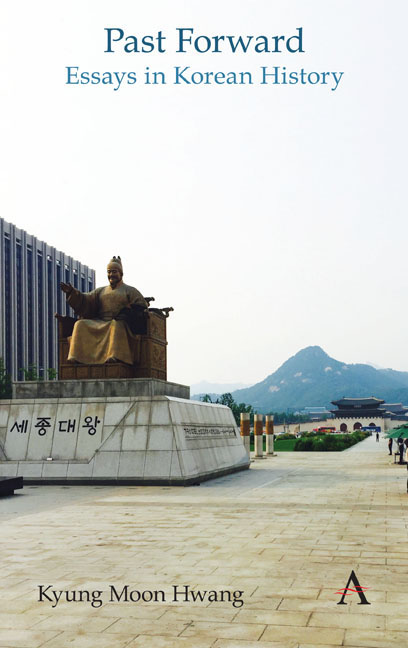Book contents
- Frontmatter
- Contents
- List of Figures
- Foreword
- Chronologies of Korean History
- Themes
- Acknowledgments
- Note on Romanization and Spelling
- Part I Circulating History
- Part II Durable Traditions
- Part III Ancient Remains
- Part IV Dynastic Depths
- 20 Currency and National Identity
- 21 Concubine Descendants
- 22 The Real Lives of Gisaeng Courtesans
- 23 A Shocking Execution
- Part V Modern Origins
- Part VI Challenges of Nationhood
- Part VII History Makers
- Part VIII External Presences
- Part IX Trials of Modernization
- Part X Gripped by the Past
- Index
21 - Concubine Descendants
from Part IV - Dynastic Depths
- Frontmatter
- Contents
- List of Figures
- Foreword
- Chronologies of Korean History
- Themes
- Acknowledgments
- Note on Romanization and Spelling
- Part I Circulating History
- Part II Durable Traditions
- Part III Ancient Remains
- Part IV Dynastic Depths
- 20 Currency and National Identity
- 21 Concubine Descendants
- 22 The Real Lives of Gisaeng Courtesans
- 23 A Shocking Execution
- Part V Modern Origins
- Part VI Challenges of Nationhood
- Part VII History Makers
- Part VIII External Presences
- Part IX Trials of Modernization
- Part X Gripped by the Past
- Index
Summary
If concubinage can be considered one of the more durable, consequential and interesting practices of Korean civilization, the historical significance of concubines’ children and descendants, or seoja, in the traditional social and family system was even greater.
In the Joseon era (fourteenth to nineteenth centuries), particularly toward the latter half, the seoja (or seoeol or seopa, two other common terms, though with slightly different nuances) comprised a large population, which is understandable, given that concubinage itself was a widespread custom. What forged these concubines’ descendants into a distinctive social status group was the legal discrimination and accompanying social prejudice against them. Due to the particular way Korean officials in the early Joseon dynasty chose to interpret Confucian teachings, the seoja, along with the descendants of remarried widows and other “unchaste” women, became prohibited from taking the state civil service examination. This effectively blocked the path toward the singular elite calling in the country, government office, and enabled the spread of this discrimination into other social realms, including the family.
That concubines’ children held a lower status within their own households made for very awkward and unhappy circumstances. And despite the lack of any legal basis, the seoja were denied becoming successors to their fathers’ lineages, as adoption of nephews for this purpose gradually became the norm. One can imagine the pain that this caused these children, a trauma that undoubtedly was passed down to their own descendants along with their social stigma. Indeed such difficulties became expressed in some of the most renowned folk tales of the Joseon era.
The “Tale of Hong Gil-dong,” for example, features the concubine's son of a powerful official who runs away from home and eventually leads a group of righteous bandits. And the most famed story of all, the “Tale of Chunhyang,” centers on a seoja girl whose hardships begin with the social expectations of being a courtesan's daughter. Despite these prejudices, however, some seoja eventually emerged as figures of great accomplishment and influence. (One assumes that, despite the bias, the odds of this happening gradually increased, given their swelling numbers.) Heo Jun, praised as Korea's greatest medical innovator and the author of “Dongui Bogam” (Encyclopedia of Korean Medicine), was a seoja who lived in the sixteenth and seventeenth centuries.
- Type
- Chapter
- Information
- Past ForwardEssays in Korean History, pp. 61 - 62Publisher: Anthem PressPrint publication year: 2019

